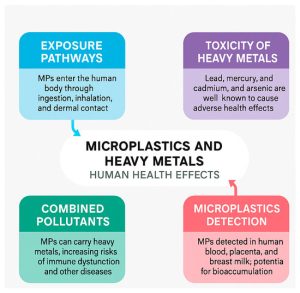Fish and Mercury: Recommendations for Children
Fish are an essential part of a healthy diet and provide key nutrients crucial for brain development during pregnancy, breastfeeding, and early childhood. These nutrients include:
- Omega-3 Fatty Acids (DHA and EPA)
- Omega-6 Fats
- Iron
- Iodine (particularly important during pregnancy)
- Choline: Supports the development of the baby’s spinal cord.
Additionally, fish provide iron and zinc, which support children’s immune systems, as well as protein, vitamin B12, vitamin D, and selenium.
Health Benefits of Eating Fish
- Cognitive Development: Moderate scientific evidence suggests that fish intake during pregnancy can support a baby’s cognitive development.
- Heart Health: Strong evidence shows that eating fish as part of a healthy diet can benefit heart health.
- Overall Wellness: Diets high in fish and balanced with vegetables, fruits, legumes, whole grains, low- or non-fat dairy, lean meats, poultry, nuts, and unsaturated vegetable oils, while low in red and processed meats, sugar-sweetened foods, and refined grains, are associated with:
- Promotion of bone health, reducing the risk of hip fractures.
- Decreased risk of becoming overweight or obese.
- Reduced risk of colon and rectal cancers.
Choosing Low-Mercury Fish
It’s crucial to limit mercury intake, especially for pregnant or breastfeeding women and children, due to its potential effects on developing brains. Many types of fish are both nutritious and lower in mercury. Use the following guidelines to choose the best fish for your family:
Best Choices: Eat 2-3 Servings a Week
- Scallop
- Clam
- Shrimp
- Oyster
- Sardine
- Tilapia
- Salmon (canned and fresh/frozen)
- Anchovies
- Catfish
- Squid
- Pollock
Good Choices: Eat 1 Serving a Week
- Trout (freshwater)
- Mackerel (Atlantic and Pacific)
- Perch (freshwater)
- Crab
- Haddock (Atlantic)
- Hake
Choices to Avoid
- King Mackerel
- Marlin
- Orange Roughy
- Shark
- Swordfish
- Tilefish (from the Gulf of Mexico)
- Tuna (Bigeye, Ahi)
Serving Sizes for Children
To prevent children from exceeding the recommended daily intake (RfD) for mercury, follow these serving sizes for various age groups when eating fish 2 times a week from the “Best Choices” category:
- Age 2: 1 ounce per serving
- Age 6: 2 ounces per serving
- Age 9: 3 ounces per serving
- Age 11 and up: 4 ounces per serving
Mercury Levels in Fish
Mercury is released into the air from natural and human activities and eventually settles into water bodies. Bacteria and microorganisms convert mercury into methylmercury, which is then absorbed by fish and shellfish. Larger fish that eat other fish tend to have higher levels of methylmercury due to bioaccumulation.
Recommended Serving Sizes Based on Mercury Levels
The Environmental Protection Agency (EPA) recommends checking local advisories for mercury content in fish caught in your area. Here’s a summary of mercury levels in common types of fish:
Low-Mercury Fish (Safe to eat 2-3 servings per week)
- Anchovies
- Catfish
- Clam
- Crab
- Croaker (Atlantic)
- Flounder
- Haddock
- Hake
- Herring
- Mackerel (North Atlantic, Chub)
- Mullet
- Oyster
- Perch
- Pollock
- Salmon
- Sardine
- Scallop
- Shrimp
- Sole
- Squid
- Tilapia
- Trout
- Whitefish
Moderate-Mercury Fish (Safe to eat 6 servings or fewer per month)
- Bass (saltwater, striped, black)
- Buffalofish
- Carp
- Cod (Alaskan)
- Halibut
- Lobster
- Mahi Mahi
- Monkfish
- Perch (freshwater)
- Snapper
- Skate
- Tilefish (Atlantic)
- Tuna (canned chunk light)
High-Mercury Fish (Limit to 3 servings or fewer per month)
- Bluefish
- Grouper
- Sea Bass (Chilean)
- Mackerel (Spanish, Gulf)
- Croaker (White, Pacific)
- Sablefish
- Perch (Ocean)
- Tuna (canned albacore, yellowfin)
Fish to Avoid (High in mercury, should be avoided by pregnant/nursing women and children)
- King Mackerel
- Marlin
- Orange Roughy
- Shark
- Swordfish
- Tilefish (from the Gulf of Mexico)
- Tuna (Bigeye, Ahi)
Protecting Your Family with Natural Detox Solutions
To mitigate the effects of mercury and other heavy metals, consider incorporating natural detox solutions into your family’s routine. Products like HMD™ Heavy Metal Detox can help eliminate harmful metals from the body, promoting better overall health.
Explore our range of natural detox products at www.heavymetaldetox.org and start your journey to a healthier, toxin-free life for you and your family.










